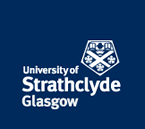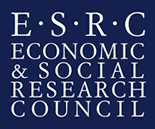Identity, citizenship and belonging
among settled Eastern European migrant
children and young people in the UK

Recent weeks have seen a refugee crisis unfold in Europe. Around four million Syrians have now fled their country. Over one million Somalians and more than two and a half million Afghans have also become refugees in recent years. The vast majority have fled to neighboring countries, which is consistent with a wider pattern where 86% of the world’s refugees reside in non-western countries. Since the start of this year a relatively small proportion (about 320,000) have sought refuge in Europe, especially through unsafe travel across the Mediterranean Sea with at least 2500 fatalities this summer. These events have dominated the UK media and in response a number of charities, organisations and citizens have mobilised to offer support, and collections of money and provisions are taking place all over the country, including in Scotland. The UK government too has modified its initial position of not accepting Syrian refugees, and now promises to take up to 20,000 Syrian refugees over five years. Some commentators have worried however that a ‘refugee influx’ or ‘swarm’, as the Prime Minister recently described refugees, would affect the UK in negative ways. To help understand the key issues, this blog clears up some prevailing myths.
1. ‘The UK is doing enough already, and it is not our problem anyway’
Much has been said in the current crisis about the UK’s contribution in terms of international aid. It is true that the UK is the second biggest bilateral donor of international aid, with 0.7% of its GDP in contributions. Some of this is spent at home, on projects with elements of international collaboration. This is however significantly short of the $5.5 billion in aid that the UN says is needed to provide basic assistance for refugees, as well as another $2.9 billion for displaced Syrians within Syria. As a consequence, existing refugee camps are often crowded and undersupplied, and leave people cold, hungry, and subject to disease.
Given the UK’s role in ongoing conflict zones in the Middle East and involvement in the arms trade, including with Syria, many claim we have a moral responsibility to act immediately and do more to help those displaced. For example, Oxfam has called on the countries supplying arms in the conflict, including UK, France and the US, to take in refugees in a fair share in proportion with their economies. In 2014, the European nation that accepted the largest number of refugees in proportion to its population was Sweden. Hungary, Malta, Switzerland and 13 other countries accepted more asylum applications than the UK, based on data from Eurostat.
According to the UN’s refugee agency, 86% of the refugees are in developing countries. Of the 4 million Syrian refugees currently displaced, almost 2 million have gone to Turkey, about 600,000 to Jordan and 1 million to Lebanon (which only has a population of about 4 million). Between June 2014 and June 2015, the UK took 216 Syrian refugees. In 2014, there were 25,000 asylum applications: a tiny figure considering this is the worst refugee crisis since the Second World War. This clearly shows that the UK compares very unfavourably to the other countries. Moreover, plans to settle 20,000 refugees over the next 5 years, as announced by the UK Government recently, will not include those in immediate need stranded across Europe. Currently, the UK and the US have some of the lowest numbers of refugees per 1000 people, at 1.9 and 0.9 respectively. This compared to 234 refugees per 1000 people in Lebanon, 87 per 1000 in Jordan, 11 per 1000 in Turkey and 2.4 in Germany.
- ‘There are too many people in the UK, we can’t take anymore’
It is true that UK has seen an increase in its population over the last decade. The current figure provided by the Office for National Statistics is 64.5 million, an increase of about 4.5 million people since 2004. The UK population is very unevenly spread, however, with a heavy concentration of people in the South East of England (nearly 9 million) and much lower population levels in Wales (only 3 million) and Scotland (over 5 million). In recent years, Scotland in particular has made the case for more inward migration. Moreover, the UK also has an increasingly ageing population, with 11.4 million people (17.7%) aged 65 and over. The ONS predicts that, by 2044, 25% of UK’s population will be 65+.
This presents a clear economic argument for policies to attract working-age people. In 2013, about 8 million people in the UK were foreign-born (about 12.5%), a third of whom reside in London. Poland, India, Ireland and Pakistan are the leading sender countries. Of those categorised as foreign-born, the vast majority are in work or studying and many plan to return to their country of origin. The Office for Budget Responsibility (OBR) says that the UK needs to attract over 7 million migrants to help keep down national debt and support increasing service costs. While population density has also very little to do with a country’s level of economic well-being (see for example, Japan or the Netherlands, with some of the highest rates of population density), it has been reported that more than 11 million homes are empty across Europe, including 700,000 homes in the UK (with 30,000 empty homes in Scotland alone). To this end, a map of UK’s population density clearly shows that ‘we are not full’ with much space to accommodate both refugees and economic migrants.
- ‘They pick and choose countries, why don’t they stay in Hungary and Greece?’
The ‘Dublin Regulation’ requires refugees to stay in the first ‘safe’ country that they arrive; at least until their asylum claims are properly processed. In practice however, this has left thousands of refugees stranded in Southern Europe. A medic from Doctors Without Borders recently described the situation in Greece as the worst he had ever seen: “I have worked in many refugee camps before, in Yemen, Malawi, and Angola. But here, on the island of Kos, this is the first time in my life that I have seen people so totally abandoned”. The Greek state does not provide adequate shelter, hygiene facilities, basic healthcare, protection or food. According to Human Rights Watch, Greek reception centres, where arriving refugees are held, lack sufficient food and health care. It is has been said that they are so unsanitary and chronically overcrowded that conditions may amount to cruel, inhuman, and degrading treatment under international law.
Other countries are equally inhospitable for different reasons. The harsh treatment of refugees in Hungary has followed Prime Minister Victor Orban’s objection to non-Christians seeking asylum. In sum therefore, while ‘safety’ refers to people not being shot and not having their houses bombed, it also requires access to good quality housing, food and health care, education and work, as well as feeling part of the wider society. This helps to explain people’s decisions to continue and move across Europe to other countries where attitudes to migrants are more positive, with better prospects of work and access to education. Article 14 of the Universal Declaration of Human Rights (UDHR) states: “Everyone has the right to seek and enjoy in other countries asylum from persecution” and all UN members are required to afford this.
4. ‘They come for the benefits, they don’t contribute’
Of the 5.5 million working-age benefit claimants in 2011, only 6.4% were foreign born. Research carried out by the Department of Work and Pensions (DWP) showed that foreign-born nationals are half as likely to claim benefits than UK nationals. Given the fact that most recently arrived refugees are young, skilled and less likely to claim benefits, it makes sense to support their transition into the UK labour market. According to a recent study of the fiscal impact of migration broadly, the authors highlighted a net contribution of £20bn to the UK over the last ten years. Foreign born people are also less likely to live in social housing, since you need to have permanent residency in the UK in order to qualify – those on work visas, students and asylum seekers don’t qualify.
A report from the Equality and Human Rights Commission found that 90 per cent of public housing goes to people born in the country. Some media reports have focussed on asylum seekers and their rights to benefits. Refugees escaping war are looking for a safe country, this includes opportunities to work. Presently, asylum seekers in the UK are not allowed to work and are forced to rely on state support. They currently receive £36.95 per week, for a single person over 18 to live on, or £43.94 for a single parent, in addition to emergency housing. Many can wait for up to six years to have their case heard and in 2014, 59% of the cases were initially refused. If refugees receive leave to remain, the vast majority go into employment. It is important here to clarify use of language: no one is ‘illegal’ until their case is rejected. The right to claim asylum in any country is enshrined in international law since 1951.
5. ‘These refugees are mainly men, not women and children, and they carry smart phones’
Oxfam and other agencies working in the refugee camps across Europe have reported that over 75% of the refugees are women and children, despite statements that many of those coming are mainly men. One of the implications is that men are less in need of refuge, but also that they are more likely to pose a security concern. It is impossible really to substantiate or refute the charge that an ‘extremist’ might also be seeking entry, other than to note that the recruitment of violent extremists has typically gone in the other direction, from the EU to Syria, and that people do not need to be sent across long distances to be party to these agendas (as they can be recruited remotely).
It is true that refugees walking on foot across Europe include men too, and who are no less in need of sanctuary, but more than half of the Syrian refugees in Europe are under 17 years of age and 38% are younger than 11. Some of these children have been separated from their parents and travel alone and others are born as refugees. When asked, parents explain that fleeing was the last resort. In the words of Warshan Shire, a Somali-British poet, ‘No one puts their children in a boat unless water is safer than land’. Some segments of the press have also commented on the appearance of the Syrian refugees, the fact that they are relatively well dressed and carry mobile phones. Given that Syria had a GDP of $1850 per capita until recently, and with the low cost of technologies everywhere, people could until recently afford clothes and phones. When fleeing, mobiles become a vital tool for navigation and communication, so no one should be surprised that phones are among the few items refugees carry.
- ‘More refugees will add pressure on services – how will schools and hospitals cope?’
It is true that refugees fleeing persecution and war need immediate support, in the form of housing, medical and psychological care, and, in time, access to education for their children. Most European countries have the resources to provide this immediate help, and evidence suggests that in the long term, refugees, like other groups of migrants, are less likely to make use of core services, even while they likely to contribute significantly more in taxes. In particular, refugee children integrate well at school, bring a wealth of languages to the learning experience and have been credited in recent studies on the ‘London challenge’ with increasing attainment rates in schools. Refugees also contribute to core services, for example the British Medical Association (BMA) database currently registers about 1200 medically qualified people who came to Britain as refugees.
- ‘Taking some now will encourage more to come’
People become refugees because their basic human rights have been violated or threatened. The Executive Director of Human Rights Watch has called the current situation ‘The Refugee Crisis that Isn’t’, given that the 350,000 estimated arrivals in Europe represents only 0.068 percent of the EU’s population. There is no evidence to support the view that giving refugees asylum in one country encourages more to uproot their families and make a perilous journey, unless there is a sufficient push factor, such as a war (the United Nations High Commission on Refugees estimates that over 2,500 people have died during this summer crossing into Europe). When there is a good chance of the situation in the refugees’ homeland improving, the majority of the world’s refugees want to return. But the option of returning to their homeland can be uncertain and distant for many. In the case of Syria, both Bashar al-Assad’s regime and the so-called ‘Islamic State’ have systematically targeted civilians, including through the use of chemical weapons.
- ‘Refugees undermine our national culture, especially if they are Muslims’
Several commentators have argued that taking in refugees will undermine the cultural fabric of British national life; some have implied that is especially the case where refugees are not Christian. Similar sentiments have been expressed before and proved time again to be mistaken. In the early part of the twentieth century, a significant number of Jewish refugees fled to Britain from the Pogroms in Eastern Europe. The Royal Commission on Alien Immigration (1903) listed Whitechapel and Mile End as a ‘Jerusalem’ or a ‘Second Palestine’ and reported complaints that Jews too often lived ‘according to their traditions, usages and customs’. This generation of refugees gave us ‘national’ icons such as Marks and Spencer and soon established a space for themselves in a way that added to – rather than detracted from – common membership. A similar analogy could be made with the Ugandan Refugees in the 1970s, or Kosovan or Somali or Refugees in the 1990s (one of them, Team GB Olympian Mo Farrah). National identities are not fixed in the past, but are dynamic and change over time, not just in response to migrants. For example, changes in social values and gender relations affect national identities and may have nothing to do with migration. The concerns about Muslims are especially unsubstantiated, as another entry on this blog shows in detail.
on 2015/11/13 and was co-authored by Nasar Meer and Daniela Sime.
Save
Save
Save
Recent Posts-
| Young Eastern Europeans Are Reporting Increased Racism And Xenophobia After The Brexit Vote (16/06/2018, Daniela Sime) |
| Supporting young EU migrants in Brexit Britain (10/11/2017, Naomi Tyrrell) |
| Saturday and back to school? Eastern European complementary schools in the UK (15/09/2016, Claire Kelly) |
| Eternal outsiders: Migrant Roma children in Europe (20/08/2016, Daniela Sime) |
| The health of Eastern European young people in the UK (17/08/2016, Daniela Sime) |
| The refugee crisis: Debunking the myths (15/08/2016, Daniela Sime) |


